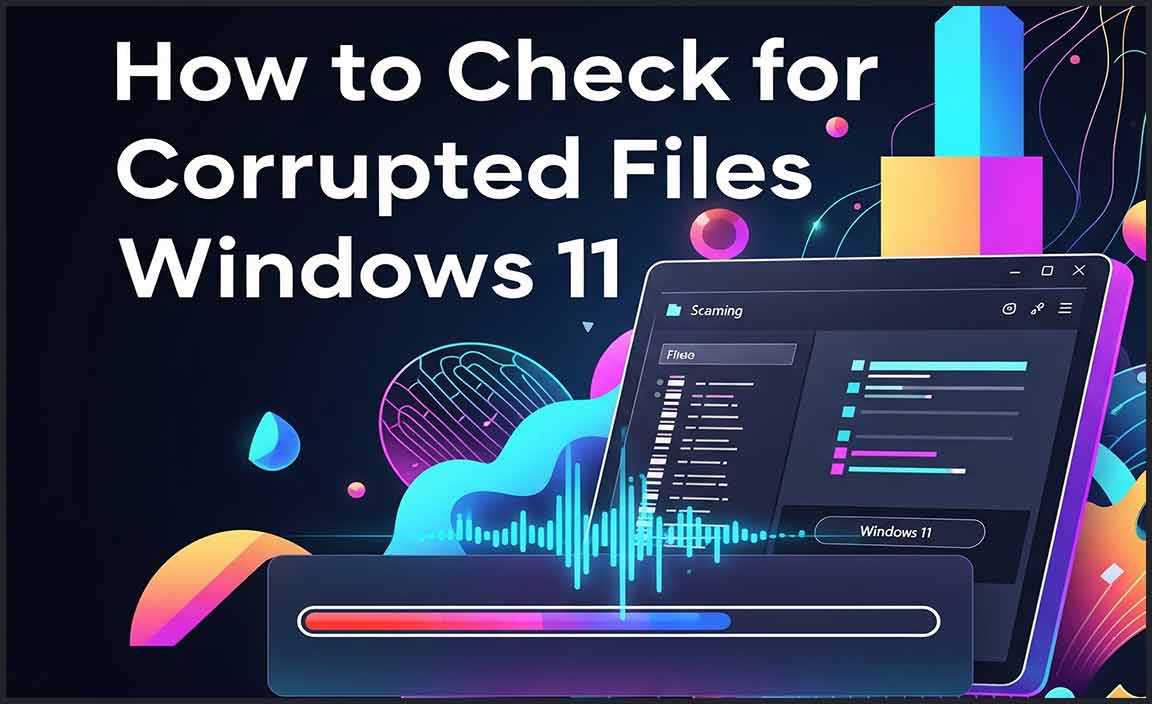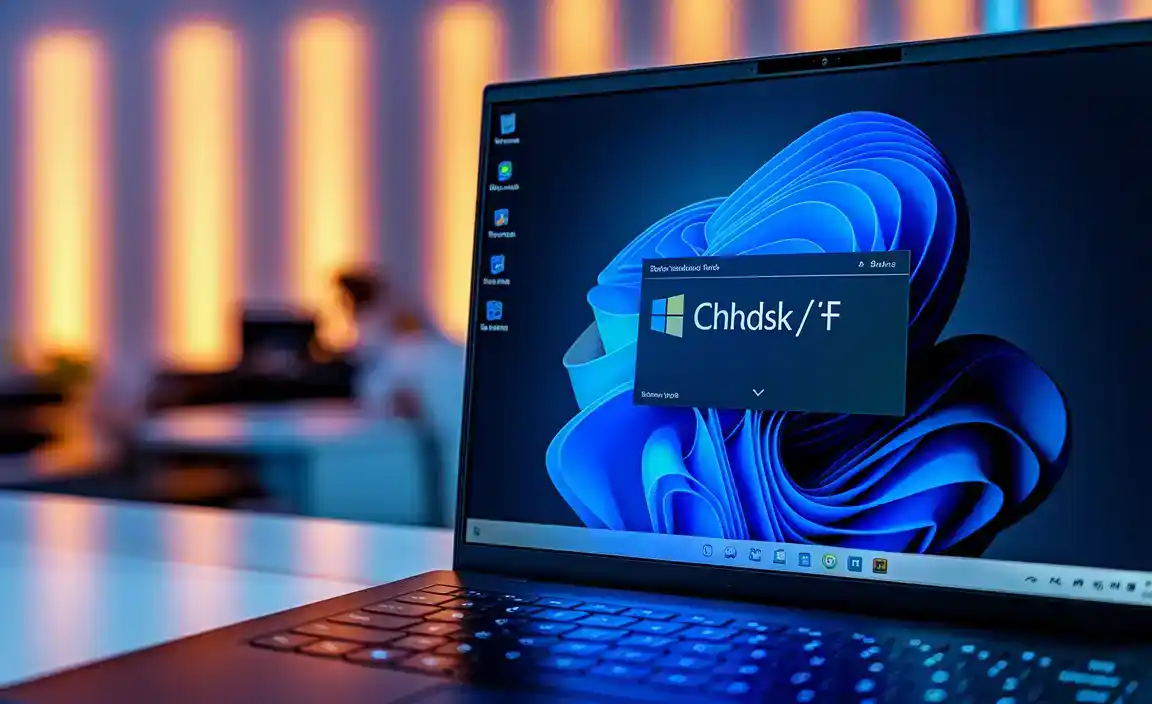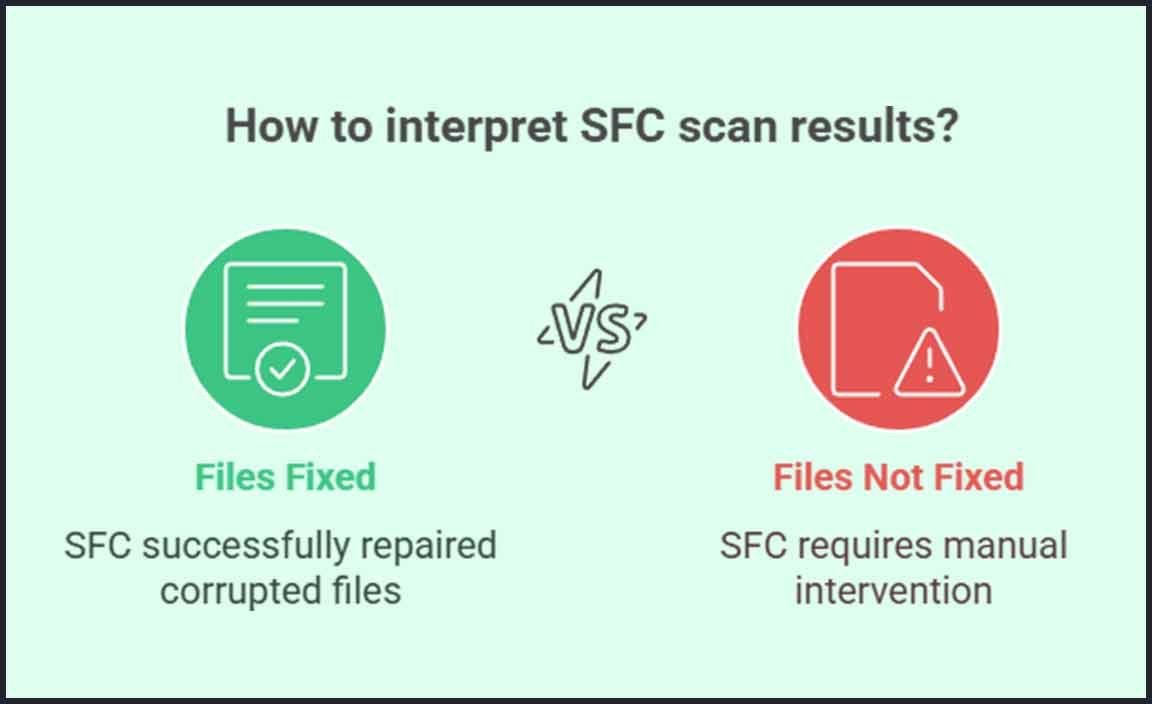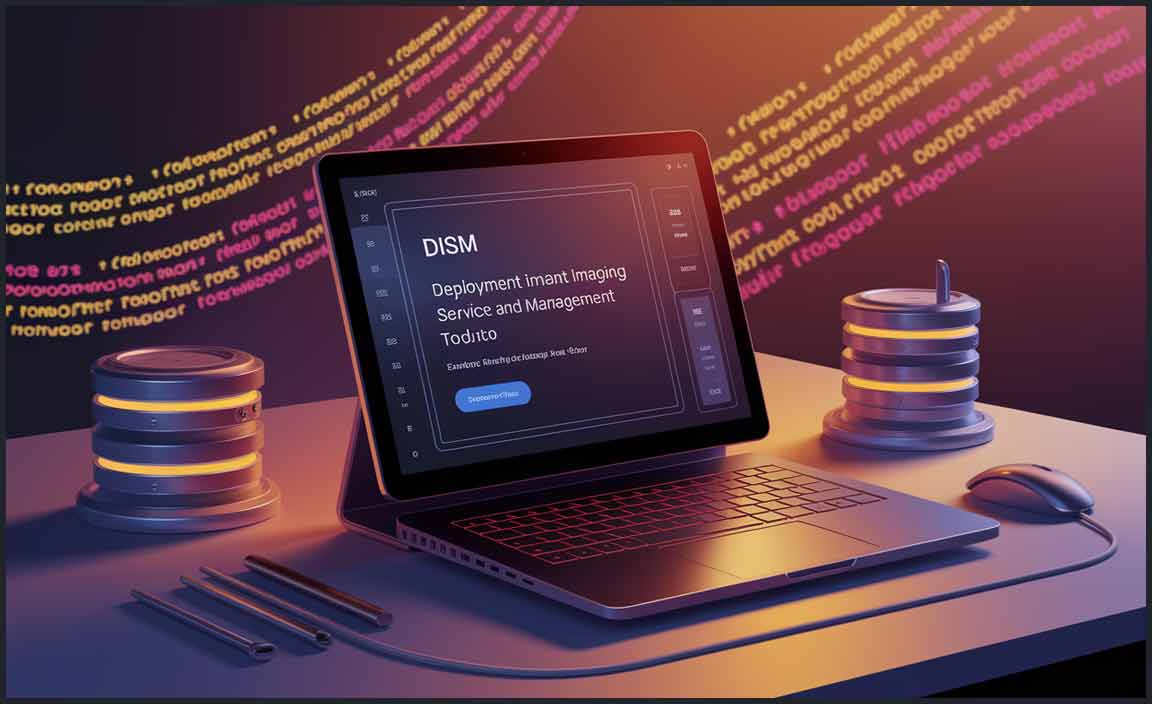Have you ever turned on your computer, only to find things not working quite right? Maybe your favorite game crashes or a file just won’t open. Sounds familiar, doesn’t it? You might wonder, “Could corrupted files be to blame?” In Windows 11, this is a common issue. But don’t worry, it’s fixable. Imagine you lost your homework because of corrupted files. Not cool. But, what if you could check for these files easily? Let’s dive into how to check for corrupted files in Windows 11. It’s like playing detective, finding clues to solve a mystery. By doing so, you’ll keep your computer running smoothly and your files safe. Are you ready to uncover the secrets of your computer? Let’s get started!

How To Check For Corrupted Files On Windows 11 Easily

Understanding File Corruption in Windows 11
Definition of file corruption. Common causes of file corruption. Symptoms of corrupted files.
Have you ever tried opening a file, but it seemed to have turned into gibberish? That’s file corruption for you! When a file gets corrupted, it’s like your computer decided to play a joke on you. Common reasons include power outages, unexpected shutdowns, or pesky software glitches. You know your files are corrupt if they refuse to open or show error messages. But don’t worry, your files aren’t plotting against you—they’re just a bit under the weather.
| Causes | Symptoms |
|---|---|
| Power outages | Refusing to open |
| Software glitches | Error messages |
Step-by-Step Guide to Using System File Checker (SFC)

Accessing Command Prompt as an Administrator. Running the SFC /scannow command. Interpreting the results of SFC scan.
Embark on a tech adventure as you tackle Windows 11’s corrupted files using the trusty System File Checker (SFC)! First, summon the Command Prompt with magical “Admin” powers. Need a wand? Nope, just type “cmd” into the search box, right-click, and pick “Run as Administrator.” Now, you’re the boss! Next, type SFC /scannow to cast your spell. Sit back as SFC hunts for pesky errors. When it’s done, the wizard will update you: files fixed, none broken, or needs your superhero touch.
| Step | Action | Result |
|---|---|---|
| Access | Open Command Prompt as Administrator | You gain admin powers, magical! |
| Action | Run SFC /scannow | The scan begins, fingers crossed. |
| Result | Read the outcome | Files fixed, or need more hero work! |
Using the Deployment Imaging Service and Management Tool (DISM) for Advanced Repair

Accessing Command Prompt for DISM commands. Running DISM /Online /CleanupImage commands. Understanding the differences between /CheckHealth, /ScanHealth, and /RestoreHealth.
Don your detective hat and crack open the Command Prompt, but don’t worry, no magnifying glass needed! Use the nifty DISM (Deployment Imaging Service and Management Tool) to fix corrupted files like a pro. Run commands like a kid on a candy spree. Type DISM /Online /Cleanup-Image and choose from three sleuth modes:
| Command | Role |
|---|---|
| /CheckHealth | Brief, like a cartoon commercial. Checks for issues. |
| /ScanHealth | A bit more thorough. Scans for problems like a zoomed-in magnifier. |
| /RestoreHealth | The superhero cape! Attempts to fix problems found. |
Accessing Command Prompt on Windows 11 is simpler than beneath grandma’s couch. Open with the magic words: “Run as administrator.” Remember, patience. Some commands take time, like a snail on a Sunday stroll. Stay calm, and let your PC do the heavy lifting!
Manual Methods to Identify and Fix Corruption
Performing a disk check using CHKDSK. Using Windows Troubleshooter for specific errors. Manually replacing corrupted files with backups.
Do you ever wonder if your computer is sick? Sometimes files might not work right because they’re corrupted. Luckily, there are ways you can fix them! Here’s how:
- Run CHKDSK: Open the Command Prompt and type CHKDSK. This checks and repairs your disk.
- Use Windows Troubleshooter: Find it in Settings. It helps solve problems for specific errors.
- Manually Replace Files: If you have backups, you can swap corrupted files with saved ones.
How do I find corrupted files on Windows 11?
You can use the scan tool: Open Command Prompt and type sfc /scannow. This tool scans and repairs damaged files.
Making sure your computer runs well is important. Many people don’t know they can do it themselves. An interesting fact: Around 70% of computer issues are often file-related. Checking and fixing them can often speed things up! It’s like a little maintenance you do to keep everything working smoothly.
Preventative Measures to Avoid Future File Corruption

Best practices for regular backups. Keeping Windows 11 and drivers up to date. Safe practices for software installation and updates.
How can I prevent future file corruption on Windows 11?
To avoid file problems, follow these steps: Regular backups are key. Save your files in the cloud or on a USB drive. Always keep Windows 11 up to date. Updates fix bugs. They also help your computer run better. Be careful with software. Download programs from trusted sources. Check reviews before installing.
Kids like healthy food, computers like up-to-date updates. Do you want smooth and fast performance? Well, the solution is simple. Keep everything current and mind how you install things. It’s like eating veggies for your PC!
When to Seek Professional Help
Recognizing signs of severe corruption. Evaluating time and technical expertise needed for repairs. Choosing professional repair services or data recovery specialists.
Oops! Is your computer acting like it’s been visited by gremlins? If files are vanishing or refusing to open, you might be dealing with corruption. Before panicking, know when it’s showtime for the pros. If it feels like you’re reading hieroglyphics when assessing the issue or if DIY methods aren’t doing the trick, it’s smart to call in the cavalry.
Here’s a quick decision table to help:
| Issue | Can DIY? | Call Professional? |
|---|---|---|
| Minor File Glitch | Yes | No |
| System Crashes | Maybe | Yes |
| Severe Corruption | No | Definitely |
Assess the time you have and your tech skills. If you’re wondering whether repairing broken files is like solving a Rubik’s cube blindfolded, a data recovery expert might be your new best friend. They have the skills and tools, so you don’t have to lose sleep or valuable data!
Conclusion
Checking for corrupted files in Windows 11 is simple. You can use tools like System File Checker and DISM. These tools help fix problems efficiently. Always keep your system updated for better performance. Try these steps if your computer acts strangely. For more tips, explore Microsoft’s support page. Stay informed and keep your computer healthy!
FAQs
What Are The Common Signs Of Corrupted Files In Windows 1And How Can I Identify Them?
When files are corrupted in Windows, they might not open at all. You could see error messages. Sometimes, your screen can freeze or the computer might act strangely. You can tell if a file is corrupted if it suddenly disappears or looks different. To check, try opening the file and see if it works right.
How Can I Use The Built-In System File Checker (Sfc) Tool To Scan And Repair Corrupted Files In Windows 11?
To use the System File Checker (SFC) tool in Windows 11, follow these steps. First, press the Windows key on your keyboard. Type “Command Prompt” and right-click it. Choose “Run as administrator.” Now, type “sfc /scannow” and press Enter. This will scan and fix any bad files.
What Steps Should I Follow To Run The Dism Tool For Fixing Corrupted System Files In Windows 11?
Sure! To fix system files, open the “Start” menu and type “cmd”. Right-click “Command Prompt” and select “Run as administrator.” Type “DISM” (Deployment Imaging Service and Management) /Online /Cleanup-Image /RestoreHealth and press “Enter”. Wait for it to finish, which can take a while. Restart your computer once it’s done.
Are There Any Third-Party Software Or Tools Recommended For Detecting And Repairing Corrupted Files In Windows 11?
Sure! If you have broken files on your Windows 11 computer, you can try using tools like EaseUS Data Recovery and Stellar Data Recovery. These are programs that can help fix files that aren’t working right. You download them, and then they help find and fix the broken files. They’re a bit like a helper on your computer!
How Can I Recover Data From A Corrupted File In Windows Without Losing Important Information?
If you have a corrupted file, try opening it with a different program. Sometimes, this can help see the data. You can also use a file recovery tool like Recuva. These tools help you get back lost data. Remember to save backups of important files regularly!
Resource:
-
Microsoft’s SFC Tool Guide: https://learn.microsoft.com/en-us/windows-hardware/manufacture/desktop/repair-a-windows-image
-
Tips to Prevent Data Loss: https://www.backblaze.com/blog/data-loss-prevention/
-
Understanding CHKDSK Functionality: https://www.tomshardware.com/how-to/use-chkdsk-windows
-
Windows Troubleshooter Explained: https://support.microsoft.com/en-us/windows/using-troubleshooters-in-windows-11-
